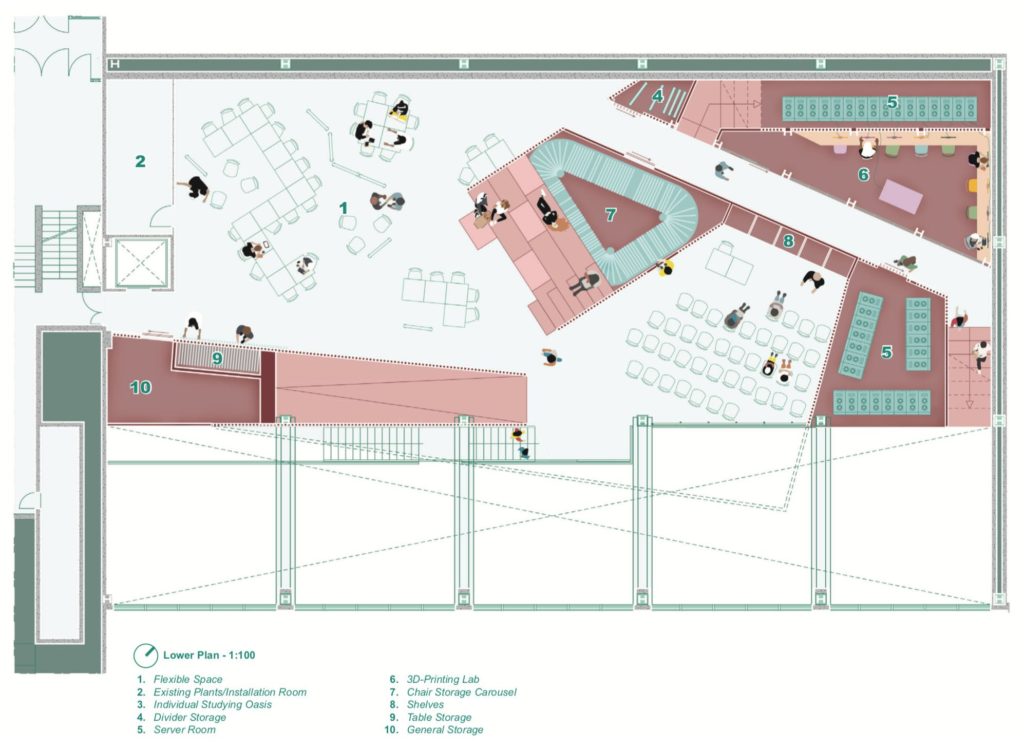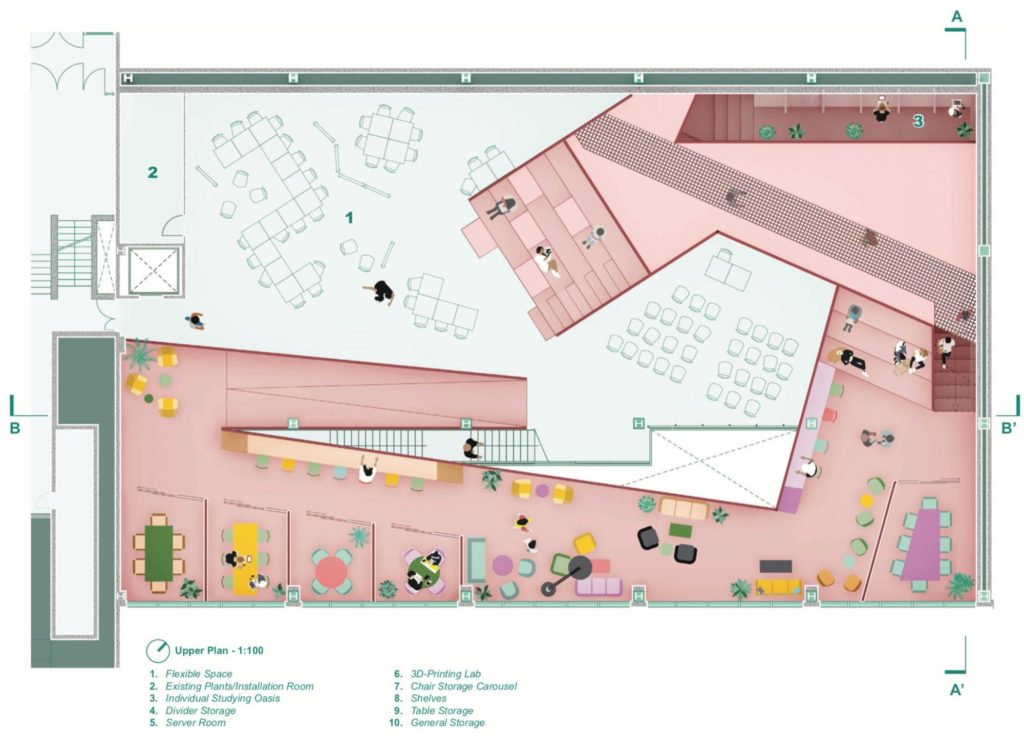University of Genoa Library Revitalization
Years | 2019
Location | Genoa, Italy

The University of Genoa launched a competition to explore the future of libraries. Our proposal was awarded third place.
More than the protection and collection of information, libraries are vanguards in the culture of sharing – of books, knowledge, space… As public buildings, their existence is predicated upon the notion that the act of sharing promotes democracy, solidarity and simple fellow-feeling. While the internet has unbinded information from the pages of books, without the physical environment as a common reference frame that enables the full bandwidth of human communication, it is difficult to build real connections and engage in fulfilling discourse. Therefore, rather than a surrogate, we see the internet as supplementary to libraries.
Freed from books, a library becomes a place of exchange, a shared public square connected to the internet. While it wants to be a freespace – akin to the all-powerful Supersurface – that enables a wide range of social interactions, the reality is that this sort of freedom and flexibility comes with the need for auxiliary (storage) spaces. At the same time, while access to the internet appears intangible, it is far from metaphysical. Behind each seemingly virtual action are servers and electric cables that demand physical presence.
The need for auxiliary spaces and the desire for freespace results in two contrasting spatial typologies within a single project. The infrastructure that enables sharing (such as storage and servers) are packed into an architecturally-dense mass. A 3D-printing and computer lab is also placed in this mass. Rather than hiding the mass, the library – just as the Valletta Puggia shows off technology – embraces its presence and exposes its interior. The mass’ geometry then choreographs a series of fixed lounge and gathering spaces. The remaining space is left empty to operate as a flexible organism that generates endless layouts that enable a range of social activities.
The confluence of the choreographed mass and the free plane produces a provocative interface between highly scripted and unscripted interactions. It is here that library-goers access the different storage systems. Altogether, the library becomes an architecture that celebrates the experiences of sharing a space.


Location | Genoa, Italy
Typologies | Library
Client | University of Genoa
Status | Concept, 3rd place
Area | 850 sq-m
Project Team | T.K. Justin Ng, Marco Chow, Roni Haravon
Other Projects
